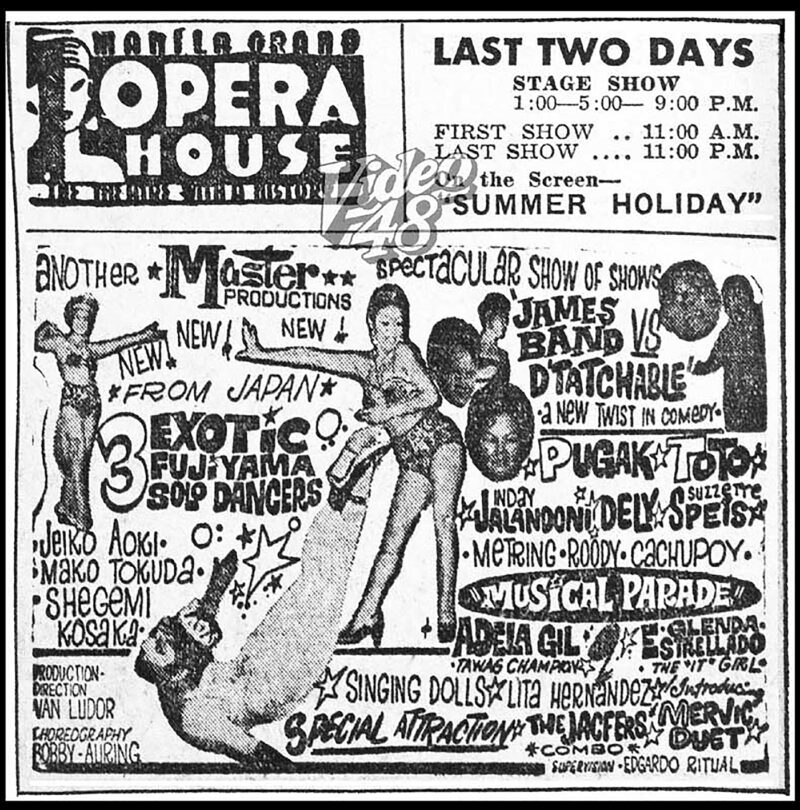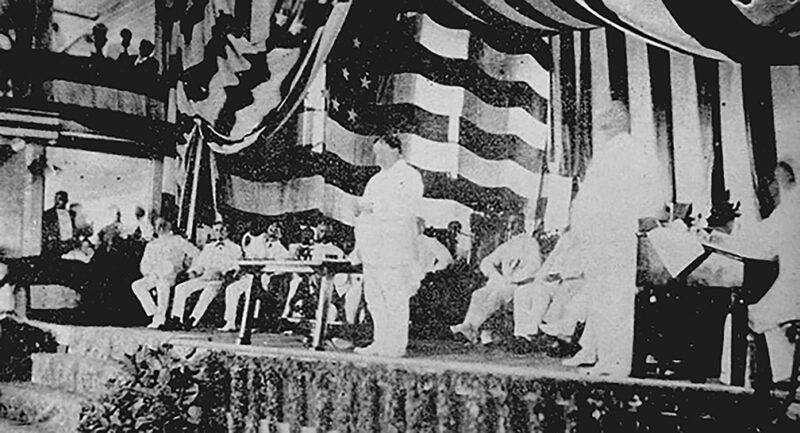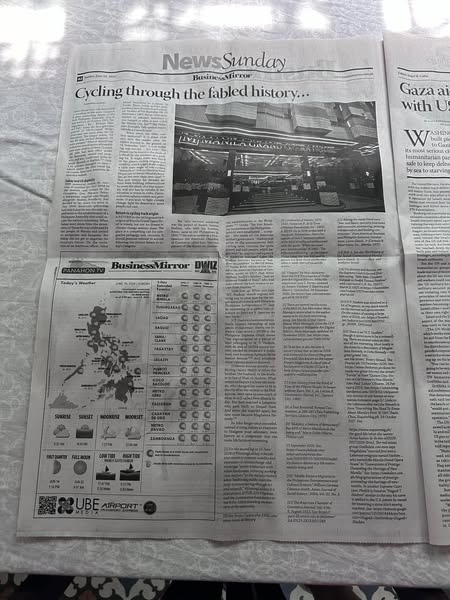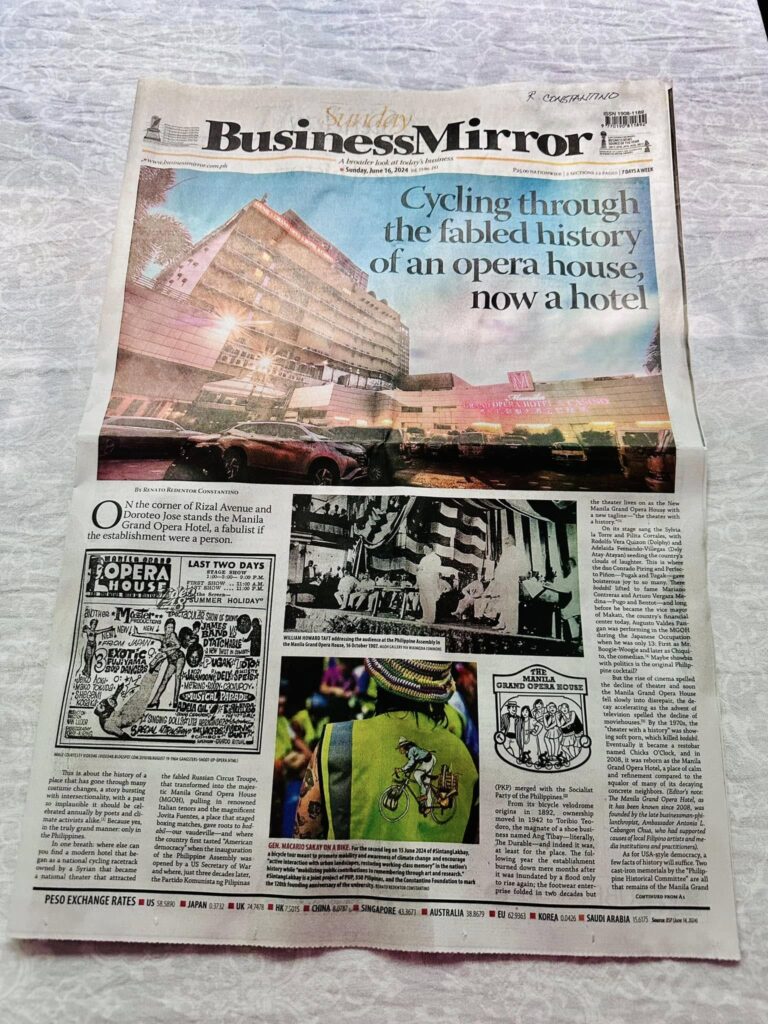Sakay and US duplicity
The memorial makes no mention of another key fact: loved by the masses, and vilified by the Occupiers, Gen. Macario Sakay, a Katipunan original who fought alongside Andres Bonifacio, had decided to lay down his arms in July 1906. American authorities had told Sakay he was the only impediment to the establishment of a Philippine Assembly that could secure the nation’s autonomy. When Sakay went down from the mountains of Tanay he was celebrated by the people of Manila and invited to receptions and banquets. But Sakay did not get to negotiate the country’s future. On the invitation of an American officer, Sakay joined festivities in a house in Cavite. There, Sakay and his companions were disarmed and arrested, victims of US duplicity. On 13 September 1907, Sakay—the main symbol of national resistence—was hanged in what is now called the Manila City Jail.[8] The Philippine Assembly Taft opened was established a month later.
What about the other cast-iron memorial? It is dated 1948 and tells the reader, after the edifice burned to the ground on 16 November 1947, “a new building was erected … [in] 1947.” The plaque can be found in the shade of a shrub by the entrance of a parking lot. It might make you think of the place’s cycling origins and mobility, which might make visible a little seen angle of our current “democracy”: Did you know at least 88 percent of Metro Manila’s families do not own their own cars? [9] This just means for decades we have been building infrastructure to serve the needs of a tiny minority, and one has to wonder if the situation is worse in Cebu, Davao, and other urbans centers and provinces. If you wish to fight climate change, fight for democracy; move people, not cars.
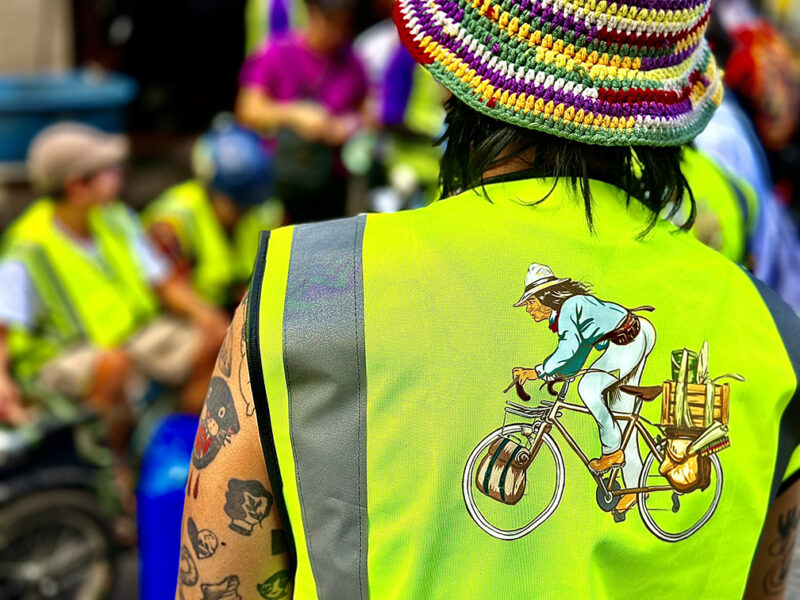
For the second leg on 15 June 2024 of #SintangLakbay, a bicycle tour meant to promote mobility and awareness of climate change and encourage “active interaction with urban landscapes, restoring working-class memory” in the nation’s history while “mobilizing public contributions to remembering through art and research.” #SintangLakbay is a joint project of PUP, 350 Pilipinas, and the Constantino Foundation to mark the 120th founding anniversary of the university. Renato Redentor Constantino
Return to cycling track origins
A RETURN to the cycling racetrack origins of Manila Grand Opera Hotel is timely, but not for fitness or climate-change reasons alone. The place is a compelling call for integrative pedagogy and, certainly, it should generate interest in anyone following the divorce debate in today’s Congress.
The ciclo nacional velodrome was the project of Nadjib Tannus Hashim, who with his brother, Amin, came to the Philippines in 1892.[10] He was so astute as a businessman the American Chamber of Commerce called him “the real pioneer of the American commercial establishments in the Philippines.”[11] Unlike “The first American businesses in the Philippines … [which] were established … to supply… [the needs of] the American military government,” Hashim was active in the entertainment field [cycling races, concerts, the opera house] and sold jewelry, which began with “an original trading stock of American watches.” Later the Hashim brothers became a “supplier of uniforms” to the US Army.[12] Walter Robb, editor of the Journal of the American Chamber of Commerce, wrote in 1923 that Amin Hashim, Nadjib’s brother, “was an intimate friend of Rizal” who had even offered the hero means to escape from Dapitan.[13]
Look him up. When you type “N.T. Hashim” search engines will bring you to what may be the origin story of alimony and divorce in Philippine jurisprudence.[14] Just as interesting is a rabbit-hole-of-a-story so intricate it deserves its own book.
N.T. Hashim’s businesses eventually covered ownership of vast pieces of real estate. Here’s one instance: Case record L-30098 in the Philippine Supreme Court shows “the expropriation of a parcel of land belonging to N. T. Hashim, with an area of 14,934 square meters, needed to construct a public road, now known as Epifanio de los Santos Avenue.”[15] And somehow there’s always more to discover.
Different sources provide conflicting claims: Nadjib is either the brother, the husband, or the brother in-law of Wadi’ah Hashim. What seems undisputed is how the woman, who changed her name to fit in shortly after her arrival in the Philippines, later came to own much of what is still called New Manila today. She first married a Lebanese, who gave birth to Ysmael Steel. And when she married again, her new name became Magdalena Hemady.[16]
As John Berger once counseled, instead of using history as a hammer to bludgeon your adversary, treat history as a companion that can make life far more interesting.
- [1] For the second leg on 15 June 2024 of #SintangLakbay, a bicycle tour meant to promote mobility and awareness of climate change and encourage “active interaction with urban landscapes, restoring working-class memory” in the nation’s history while “mobilizing public contributions to remembering through art and research.” #SintangLakbay is a joint project of PUP, 350 Pilipinas, and the Constantino Foundation to mark the 120th founding anniversary of the university.
- [2] See: https://www.pkp-1930.com/some-notes-in-history
- [3] Landmarks of Manila, 1571-1930, Visitacion R. de la Torre (Filipinas Foundation, Inc., 1981) p. 92-93. De la Torre writes with a sharp wit. For instance, here’s her caption of Noli I. Yamsuan’s photo of the MGOH billboard emblazoned with the words “Where you meet your stars in person” in 1981: “The billboard is deceiving – at the Opera House today, the ‘star you meet in person’ are dead. Gone are the days when it made stars of vaudeville actors.”
- [4] “Chiquito” by Malu Maniquis, from the CCP Encyclopedia of Philippine Art Digital Edition, Malu Maniquis and Lena S. Pareja, updated by Johann Vladimir J. Espiritu and Elmer L. Gatchalian, 18 November 2020. See https://epa.culturalcenter.gov.ph/4/26/4333/
- [5] There are several recollections of the MGOH, but film maker Malu Maniquis wrote what to the author seems to be the most interesting essay. See Manila Grand Opera House, Malu Maniquis, from the CCP Encyclopedia of Philippine Art Digital Edition, Malu Maniquis, updated 18 November 2020. See: https://epa.culturalcenter.gov.ph/7/60/3076/
- [6] To be fair, it also became a concert venue that as late as 2006 still attracted the likes of the great FrancisM, also known as the rapper Francis Magalona. A clip of one of his concerts in Chicks O’Clock is here: https://www.youtube.com/watch?v=m0Zzrrq1Deo
- [7] From History from the Point of View of the Filipino People, in Issues without Tears, Vol. 1, ed. Letizia R. Constantino (Karrel, Inc., Quezon City, 1984)
- [8] A Past Revisited, Renato Constantino, p. 266-267 (Tala Publishing Services, Quezon City, 1975)
- [9] “Mobility, a feature of democracy? But 88% of Metro Manila is at the losing end,” Maria Golda Hilario, Philstar.com
- 15 September 2020. See: https://www.philstar.com/other-sections/news-feature/2020/09/15/2042650/mobility-feature-democracy-88-metro-manila-losing-end
- [10] “Middle Eastern Migrants in the Philippines: Entrepreneurs and Cultural Brokers,” William Gervase Clarence-Smith, Asian Journal of Social Science , 2004, Vol. 32, No. 3.
- [11] The American Chamber of Commerce Journal, Vol. 3 No. 8, August 1923. See: https://quod.lib.umich.edu/p/philamer/AAJ0523.1923.001/248
- [12] Among the needs listed were “beer and liquor, specialty food items and souvenirs, stevedoring, printing, transportation and building construction.” From American Business and Philippine Economic Development, Lewis Gleeck, Jr (Carmelo & Bauermann, Inc., Manila, 1975)
- [13] Ibid. 5. See also The History of the Jewish Community in Manila, Lewis Gleeck, Jr.. —— (n.d. and publisher listed)
- [14] On alimony and divorce, see the Supreme Court’s Second Division ruling, “Afife Abdo Cheyban Gorayeb vs Nadjib Tannus Hashim” with case record G.R. No. 25577, March 3, 1927, in https://chanrobles.com/cralaw/1927marchdecisions.php?id=20
- [15] N.T. Hashim was involved in a lot of litigation, as any quick search on the internet will demonstrate. On the subject of owning a large piece of EDSA, see: https://lawphil.net/judjuris/juri1970/feb1970/gr_30098_1970.html.
- [16] There is an “H.T. Hashim” though it seems more to be a misspelling. There are several takes on this, and all are interesting. Most lovely is the essay by a descendant of Magdalena Hemady, in Doña Hemady—my great grand ‘lola’,
- not the street,” Rosary Ysmael, The Diarist.ph, 19 December 2020. See: https://www.thediarist.ph/dona-hemady-my-great-lola-not-the-street/ “Faride” is from “Quezon City: Stories of Old Homes in New Manila,” John Paul ‘Lakan’ Olivares, 26 February 2019. See: https://lakansining.wordpress.com/2019/02/26/quezon-city-stories-of-old-homes-in-new-manila/comment-page-1/. Links to the Lebanese elite and the Ysmaels is from “Everything You Need To Know About Manila’s First ‘It’ Girl,” Paolo Chua, EsquireMag.ph, 29 October 2017. See:
- https://www.esquiremag.ph/the-good-life/what-she-wants/chona-kasten-la-divina-a00208-20171029-lfrm3. The real estate group OneBalete.com even says Magdalena “married first into a Lebanese emigrate named Hashim … who owned the Manila Grand Opera house” in “Generations of Prestige: Unraveling the Heritage of New Manila.” See: https://onebalete.com.ph/blog/generations-of-prestige-unraveling-the-heritage-of-new-manila. In another Supreme Court case, Nadjib is listed as “Nageeb T. Hashim” similar to the way his name is spelled in the U.S. patent he owned for inventing a stone block sawing machine. See: https://patents.google.com/patent/US1565444A/en?inventor=Nageeb+Hashim&oq=Nageeb+Hashim
Image credits: MGOH Gallery via Wikimedia Commons, Renato Redentor Constantino

